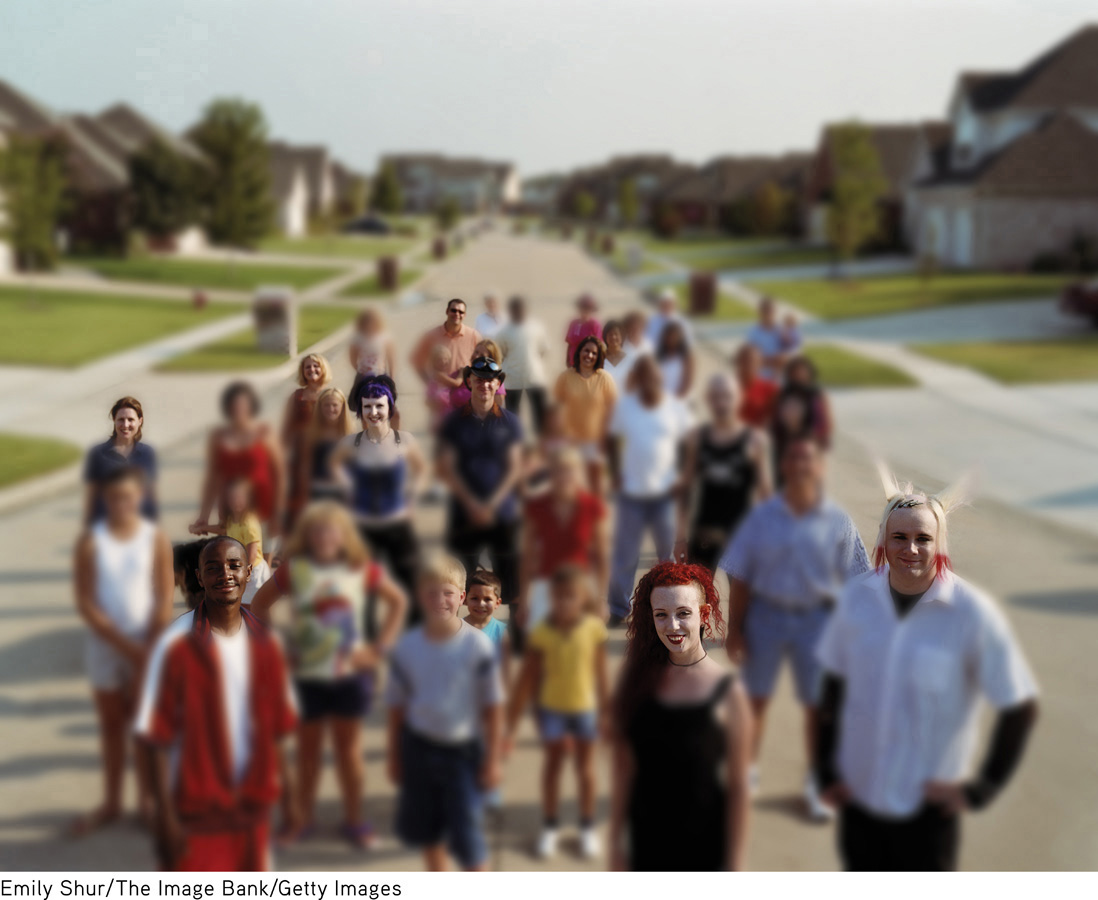Chapter 4 Introduction
132
CHAPTER 4
NATURE, NURTURE, AND HUMAN DIVERSITY
.............

- Behavior Genetics: Predicting Individual Differences
- Evolutionary Psychology: Understanding Human Nature
- Culture, Gender, and Other Environmental Influences
133
What makes you you? In important ways, we are each unique. We look different. We sound different. We have varying personalities, interests, and cultural and family backgrounds.
We are also the leaves of one tree. Our human family shares not only a common biological heritage—cut us and we bleed—but also common behavioral tendencies. Our shared brain architecture predisposes us to sense the world, develop language, and feel hunger through identical mechanisms. Whether we live in the Arctic or the tropics, we prefer sweet tastes to sour. We divide the color spectrum into similar colors. And we feel drawn to behaviors that produce and protect offspring.
Our kinship appears in our social behaviors as well. Whether named Gonzales, Nkomo, Smith, or Wong, we start fearing strangers at about eight months, and as adults we prefer the company of those with attitudes and attributes similar to our own. Coming from different parts of the globe, we know how to read one another’s smiles and frowns. As members of one species, we affiliate, conform, return favors, punish offenses, organize hierarchies of status, and grieve a child’s death. A visitor from outer space could drop in anywhere and find humans dancing and feasting, singing and worshiping, playing sports and games, laughing and crying, living in families and forming groups. Taken together, such universal behaviors define our human nature.
What causes our striking diversity, and also our shared human nature? How much are human differences shaped by our differing genes? And how much by our environment—by every external influence, from maternal nutrition while in the womb to social support while nearing the tomb? To what extent are we formed by our upbringing? By our culture? By our current circumstances? By people’s reactions to our genetic dispositions? This chapter tells the scientific story of how our genes (nature) and environments (nurture) define us.
134